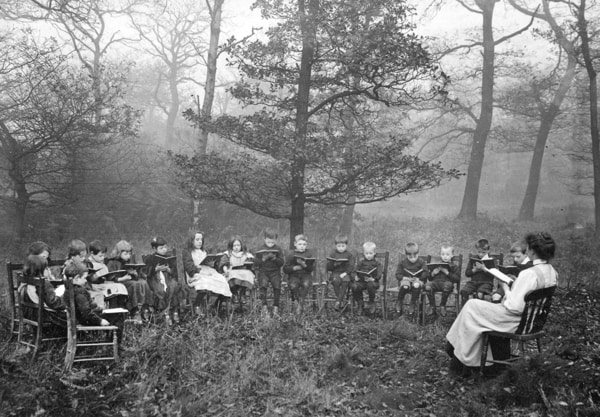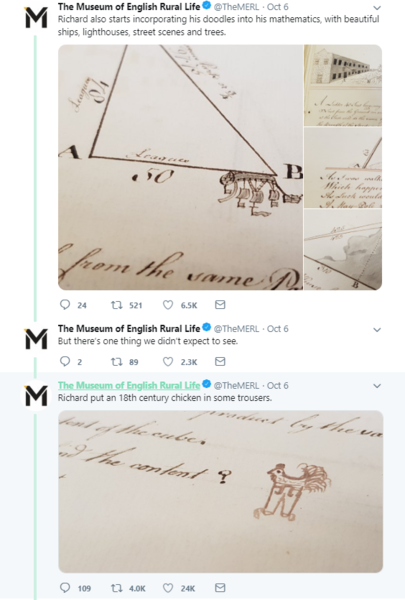This week has been one of the highlights of the archival year – Explore Your Archive week. Archives from across the country take part in this sector-led campaign that is guided by the Archives and Records Association to showcase the best of archives and archive services.
The initiative aims to open up archive collections in fun and interesting ways and, while it runs throughout the year, the annual launch week is in November. One of the highlights of launch week is that archives take to Twitter and showcase their collections, guided by various themed hashtags (my favourite being #ArchiveAnimals, because who doesn’t like the opportunity to see cute dog pictures?!).
Outreach
Explore Your Archives is a great example of an outreach initiative. Outreach is an important function of an archive and one of the best ways we, as archivists, can connect our collections to different audiences. Outreach can take various forms, including exhibitions, workshops, publications and educational programmes. With the advances made in digitising archives over the last decade, new and exciting opportunities have been afforded to archivists: there are new and creative ways for us to present archival material to audiences.
One of the most fundamental benefits digitisation has brought is the ability of archives to transcend geographical borders. Researchers located all over the globe can now view the multitude of collections digitised by archives, advancing their research at the click of a button. We have made archives easier to use.
However, the benefits of digitised archives don’t stop with the online gallery and image viewer that is so indispensable to the academic researcher. Archives bring meaning to and enrich the lives of so many people in so many different ways; to engage with, provide meaning to and connect with these audiences requires us to go beyond the gallery of digitised content. We need to tease the stories out, present the material in new and creative ways and re-imagine collections, showing off the potential they have. As archivists, one of the ways we can do this is to create digital stories.
What is a digital story?
Digital storytelling is prevalent in modern journalism; Wikipedia describes it as ‘a short form of digital media production that allows everyday people to share aspects of their story’.

Not all storytelling is done with books today. Catalogue reference COPY1-542 (53)
However, I think we can scale the definition back and describe it simply as ‘the use of digital tools to tell stories’. Storytelling is a social and cultural tradition that predates writing and that tradition has not changed with the emergence of digital storytelling – only the medium has.
The availability of tools for presenting material on the web – particularly social media tools – has given us a platform to share with audiences who may not otherwise cross paths with archival material in their day-to-day lives. We have an easy to way to share the meaningful, the serious, the funny, and the downright quirky items that lurk in those acid-free boxes in the archives store.
How do you tell a digital story?
Archives are positively brimming with stories. However, archives services tend to be short of time and resources, and often have bigger plans for collections engagement than they have the capacity to fulfill. However, with outreach, no effort is too small. A simple tweet is enough to start a conversation. Or to go viral.
In October, The Museum of English Rural Life posted a story on Twitter about the Beale Farm Diaries (you can read the whole story on Thread reader). They highlighted, in particular, a mathematics notebook in the collection from a family member, Richard. Richard liked to doodle during his maths lessons (didn’t we all?) and the centrepiece of the story was made up of the exemplary dog and chicken doodles crafted by Richard.

The infamous chicken in trousers from The Museum of English Rural Life’s viral Twitter story
Attracting 20,000 retweets and double the number of likes, this story is a shining example of the power of crafting a story about an archive collection, and the connections it can garner from many diverse audiences.
What I like about the story is that it begins with images of filing cabinets and archive boxes. It sets the archival scene and draws the reader in, intrigued by what they will find hidden in those boxes. What we do find – the power of the doodle – is simple and fun. People can connect to it in different ways – the everyday experience of being bored in maths (well, for me at least) and the shared enjoyment of a chicken in trousers (cue the gifs) and a funny-looking dog.
This isn’t to suggest that the aim of every Twitter story is to go viral; however, it shows the power of a simple, uncomplicated story. It’s a low-bar way of engaging audiences with the multitude of treasures that can be found in an archive.
Telling stories doesn’t just stop (or start) with Twitter. There are many diverse ways of presenting the stories found in collections. Some of my favourites include
- The Wellcome Collection digital stories Mindcraft and The Collectors
- Lives of the First World War from the Imperial War Museum, which allows contributors to add life facts and stories to their digitised collection of soldier’s photographs
- Behind Barbed Wire, a story from the Library of Congress about the internment of Japanese-American citizens during World War Two and the newspapers produced by the community, presented using the Esri Story Map Cascade tool
The most promising aspect for me is the lack of barriers surrounding archives and digital storytelling. Archives are unique – they are the record. Opportunities abound for presenting the stories found in collections with the modern technological tools we have at our fingertips.
The launch week for Explore Your Archives is a great opportunity for the stories that can be found when we lift the lids on those boxes: I hope it will inspire archivists to look further and think about how we can use our collections to engage new and different audiences. The collections, figuratively speaking, are our oyster.